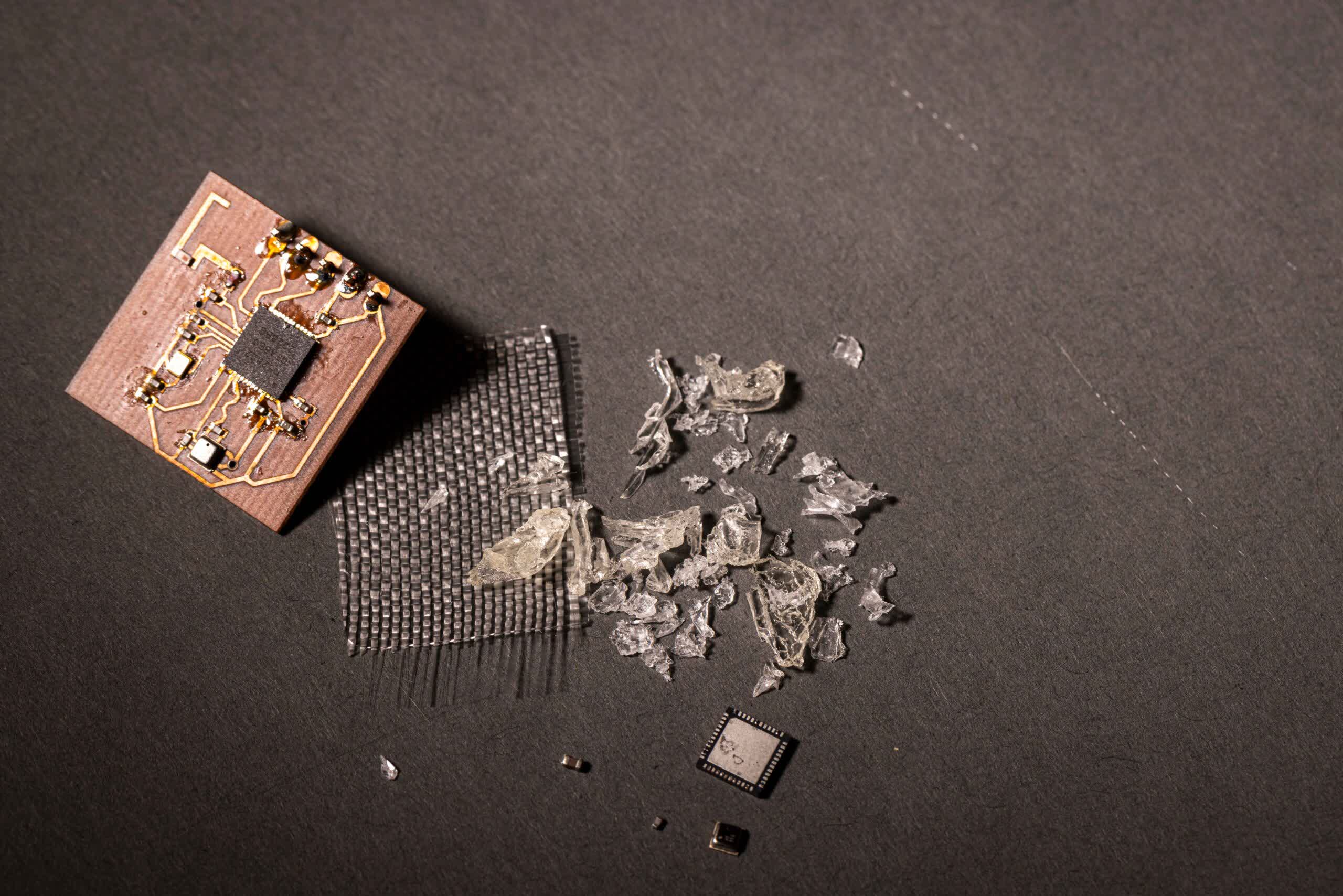A hot potato: Printed circuit boards are ubiquitous; they are used in nearly all electronic devices and constitute a significant portion of the electronic waste accumulating in landfills. A new polymer-based material could render PCBs much more environmentally friendly and facilitate endless recycling.
Researchers at the University of Washington have announced the development of a new type of PCB with significantly higher recycling potential than traditional printed circuits. Utilizing cutting-edge sustainable polymers, these new PCBs have the potential to address a substantial portion of the world’s e-waste issues if widely adopted.
Traditional PCBs, designed to house and connect chips, transistors, and other electronic components, consist of layers of thin glass fiber sheets coated in hard plastic and laminated with copper. The challenge lies in separating the plastic components from the glass, leading to PCBs often ending up in landfills, with individual electronic components remaining unused for future applications.
Current methods of PCB recycling involve burning everything to extract valuable materials like copper and gold. This process is often carried out in developing nations, and poses health risks due to toxic fumes. The UW researchers have introduced vitrimer, a type of polymer, to create their “vitrimer printed circuit boards” (vPCBs), which exhibit exceptional recycling properties when combined with a specific organic solvent.

First developed in 2015, Vitrimer polymers have the ability to rearrange and form new bonds at the molecular level when exposed to specific conditions, such as heat at a precise temperature. According to the researchers, Vitrimer-based vPCBs can transform into a “jelly-like” substance in a solvent without compromising their fundamental structure and can be recycled “repeatedly” with minimal material loss.
When vitrimer is converted into jelly, the electronic components become easily recoverable and reusable. Recycled vPCBs maintain “high-quality” characteristics compared to recycled conventional plastics. With these new vPCBs, the UW scientists managed to recover 98 percent of the vitrimer polymer, 100 percent of the glass fiber, and 91 percent of the solvent used during the recycling process.
UW assistant professor Vikram Iyer highlighted how PCBs constitute a significant portion of the mass and volume in electronic waste. While they are designed to withstand heat and chemical elements, which are essential for creating durable consumer products, they pose challenges for recycling. vPCBs possess electronic properties similar to those of conventional plastic PCBs but are considerably easier to disassemble for creating new circuit boards.
According to the researchers, vPCBs could potentially reduce global warming by 48 percent and decrease carcinogenic emissions by 81 percent. However, there are “significant hurdles” to overcome before adopting this novel technology. Governments would need to enforce “strong” regulations to implement the new recycling systems, compelling companies to “design and optimize” materials with sustainability goals in mind from the outset.

